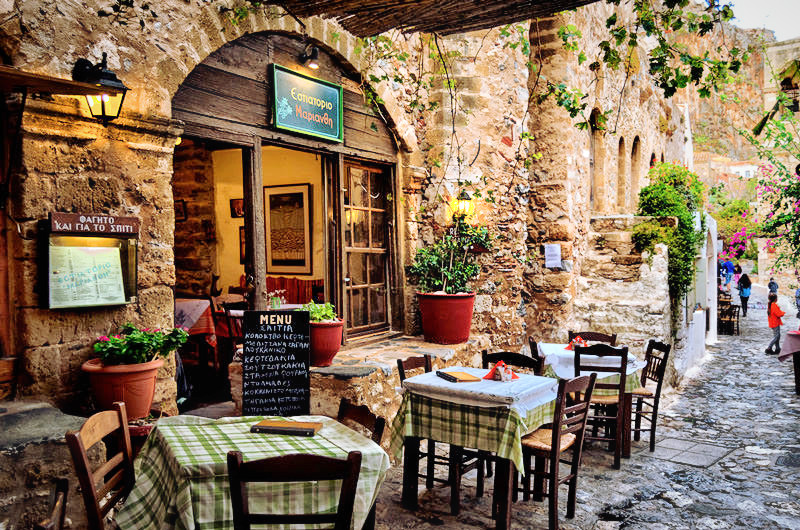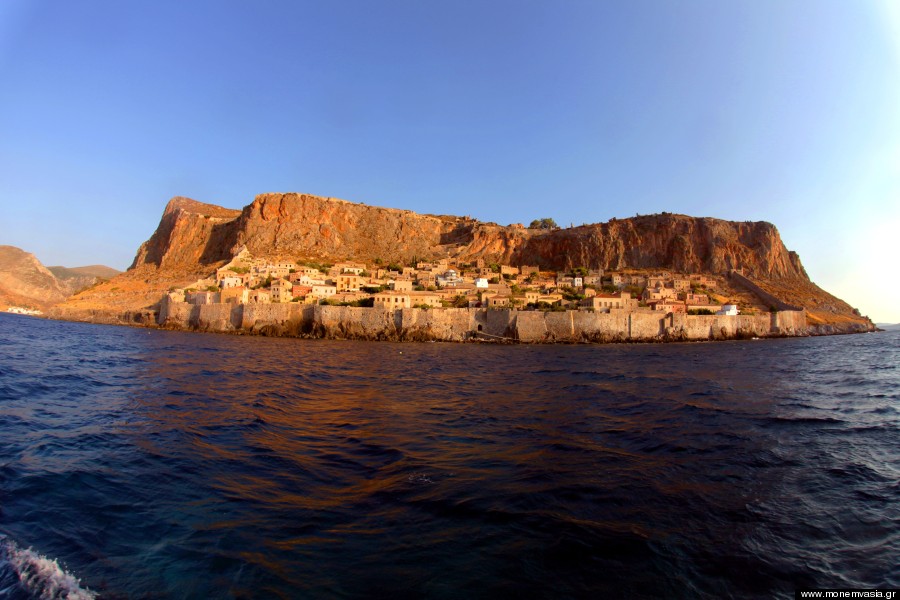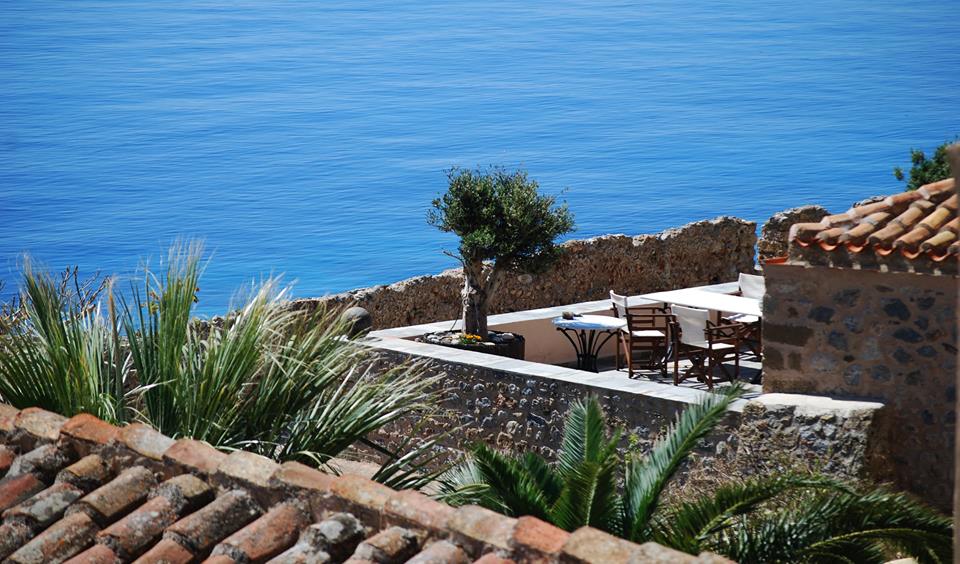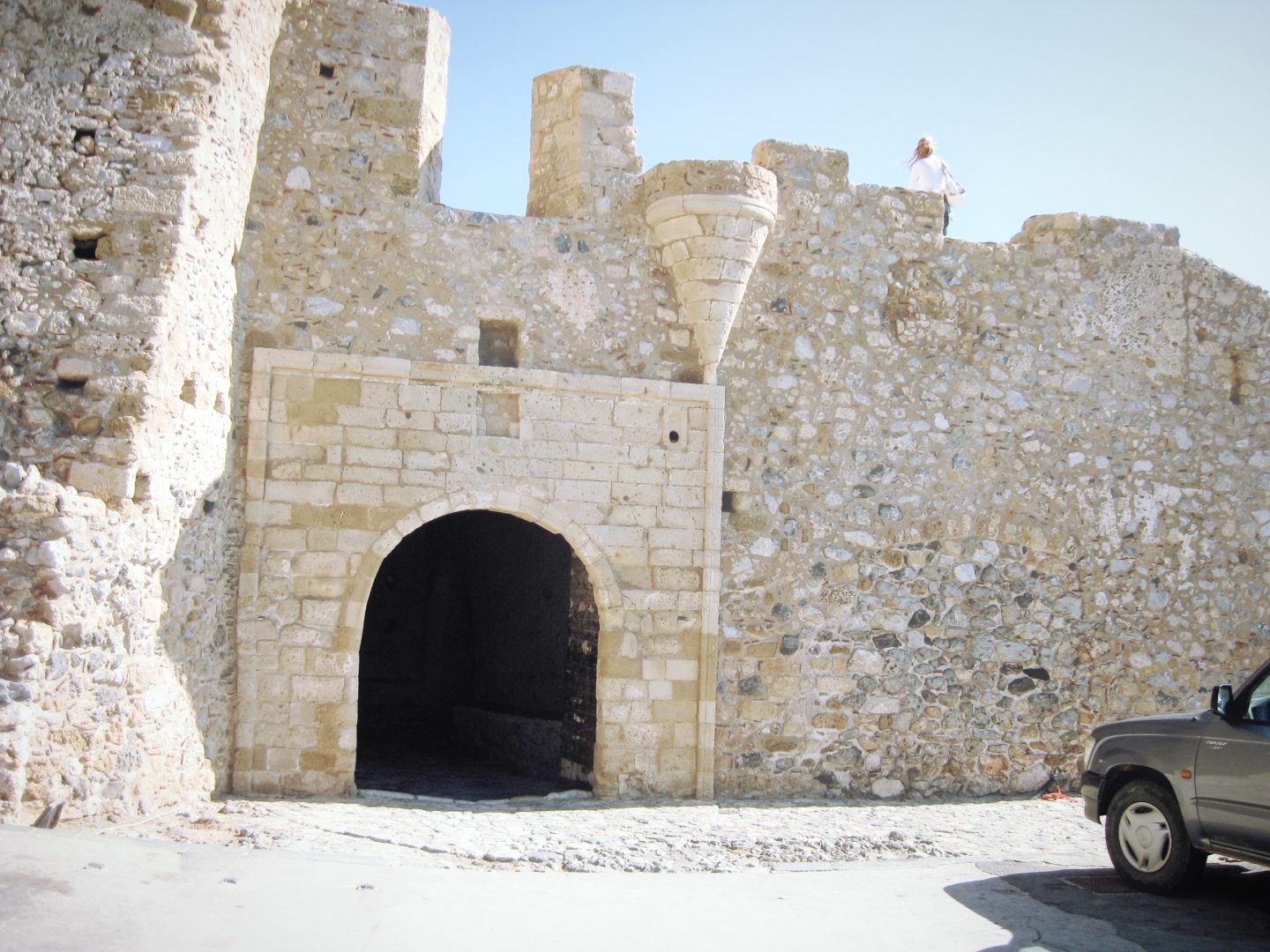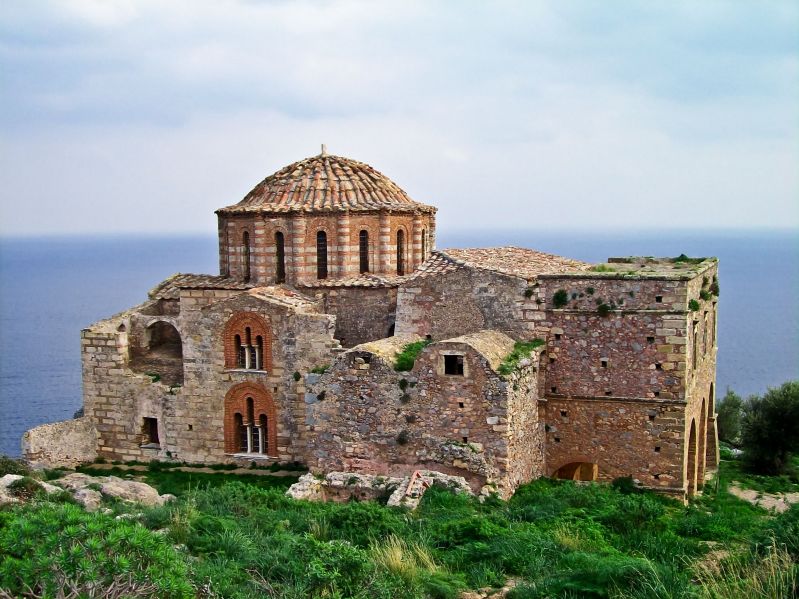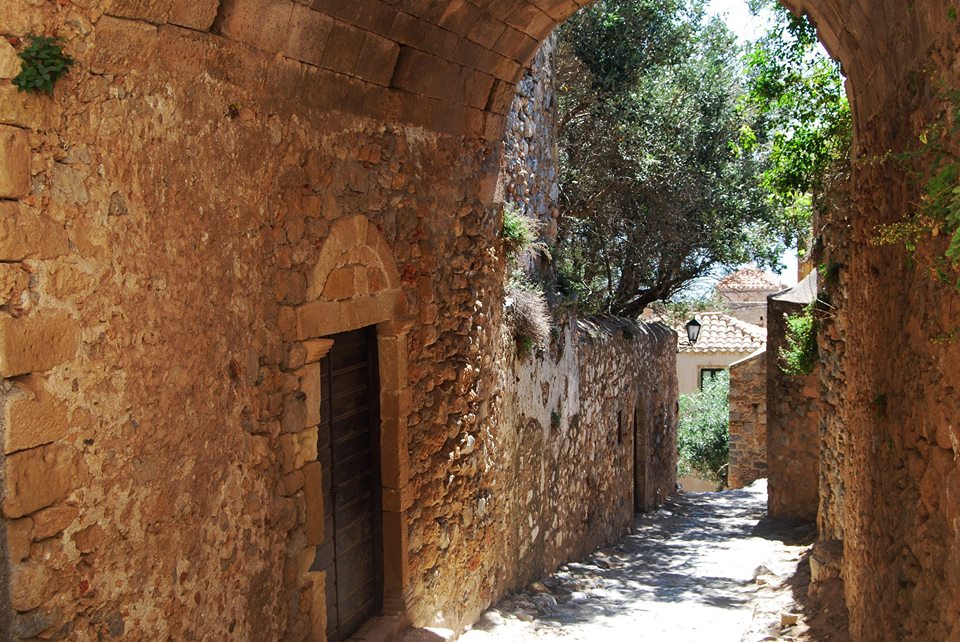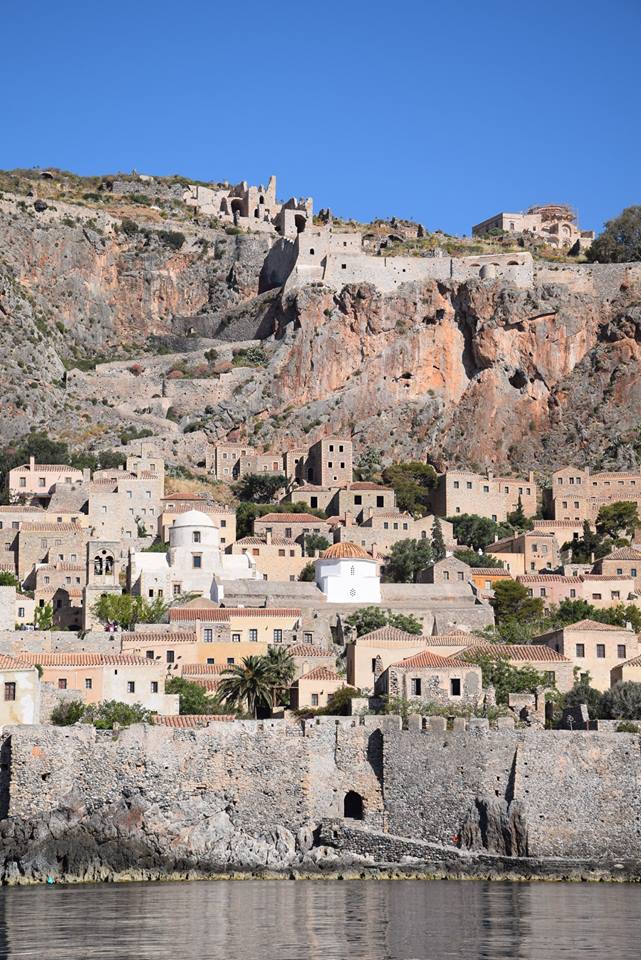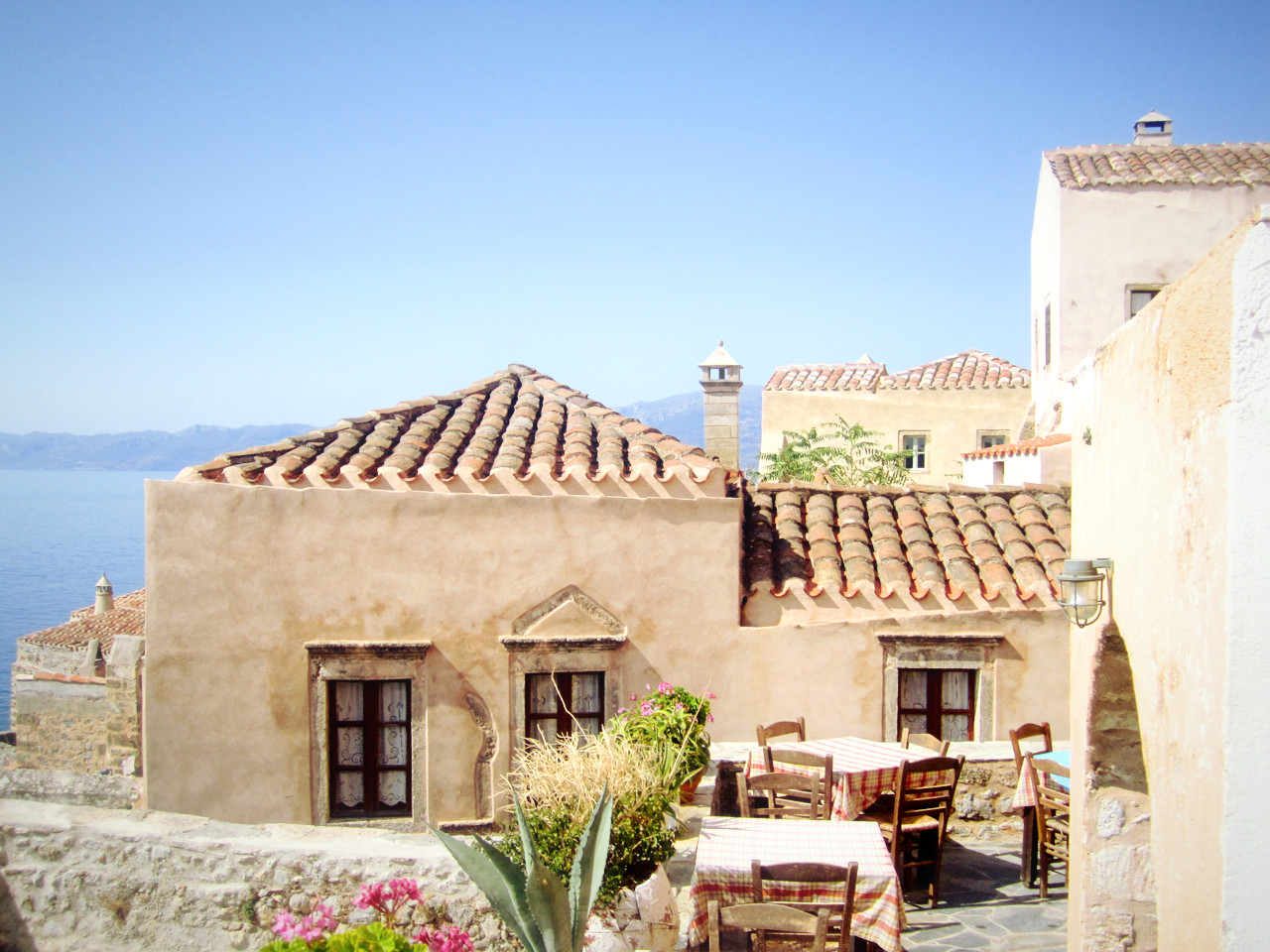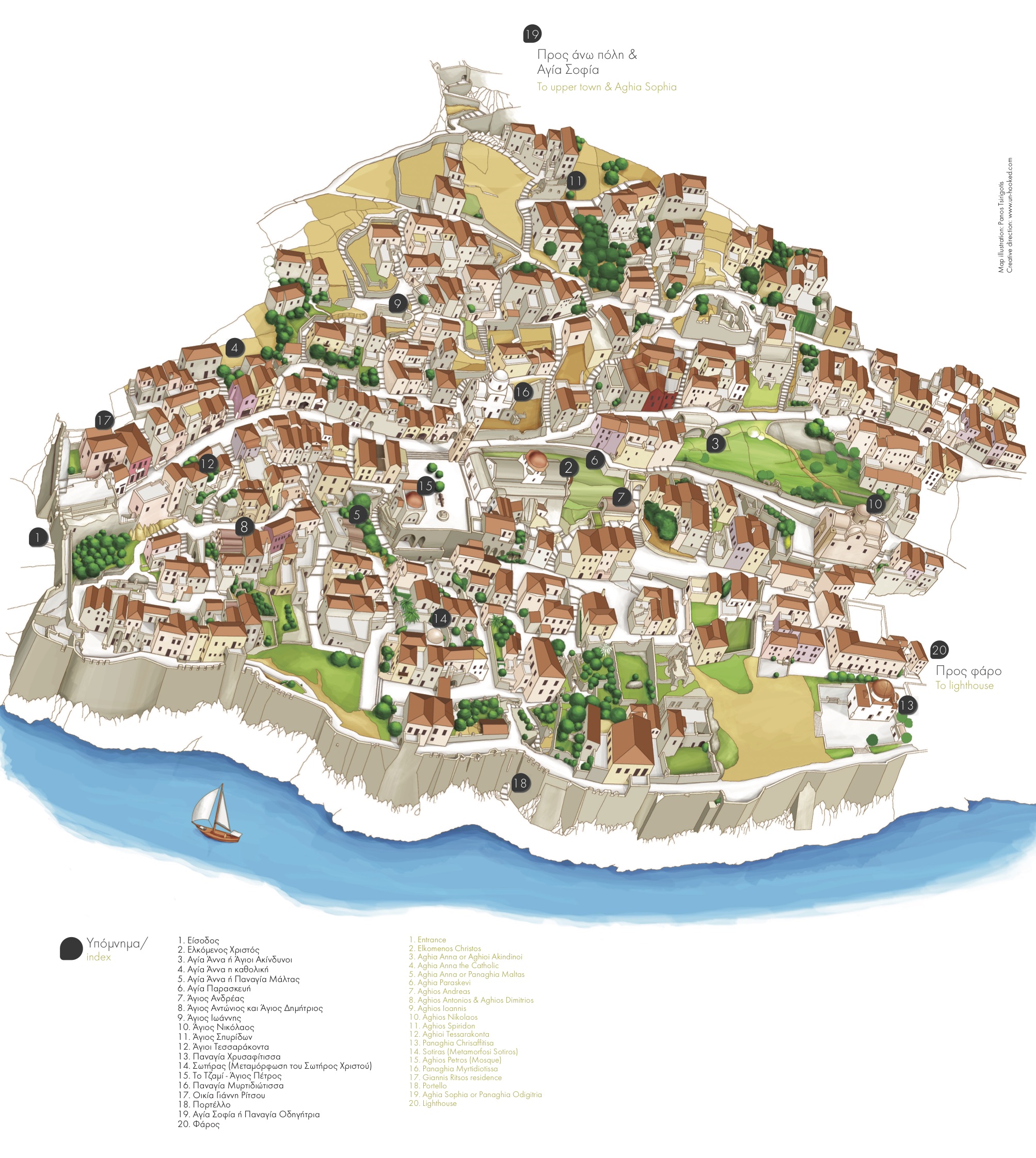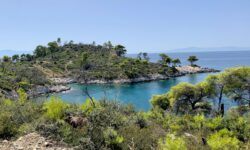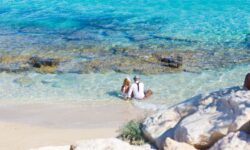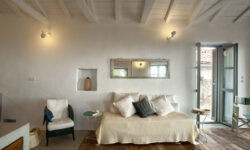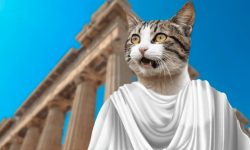Monemvasia: una città fortezza; un segreto nascosto; un villaggio nel Peloponneso (nella prefettura di Laconia) ; una città bizantina fondata nel VI secolo divenuta, nel corso della sua storia, un porto di importanza strategica.
Dai francesi veniva chiamata Malvasia in ossequio “alcolico” all’omonimo vino prodotto nella zona; dai turchi guadagnò povertà e recessione economica; dai terremoti ottenne la libertà dalla terra ferma.
Nel 375 dopo Cristo, infatti, un sisma la scollegò dalla terra ferma; terra ferma a cui l’uomo la ricollegò successivamente con la costruzione di una strada rialzata che la ricongiunge a Yéfira.
Collegata o non collegata la storia non cambia: dai commenti di chi segue My Greek Salad sembra che questa cittadina sia davvero fantastica. Isolata e tranquilla, ci si accede tramite un’unica entrata, regala un’esperienza assolutamente greca.
Castello, monastero, chiese, ma anche tavernette e negozi. Un super condensato ellenico assolutamente romantico (mi dicono).
Silvia: Io ci sono stata ! Meravigliosa... ma meglio non in luglio e agosto! C'è da morire. Ho pernottato dentro la città e, dato che di giorno era impossibile girare x le viuzze di pietra (causa caldissimo) l'ho vista di sera illuminata con le luci giallognole dei lampioni... è stato qualcosa di magico.
Nadia: Giugno 2007. Un viaggio avventuroso "fai da te", dopo sei ore di auto da Nafplio attraverso monti, campagne assolate, paesini sperduti nel nulla tra capre e ulivi, giungiamo in questo piccolo villaggio medioevale, elegante ma allo stesso tempo misterioso e affascinante, con le sue viuzze acciottolate, con locali, negozietti, taverne, chiese e piazzette. Abbarbicata su uno sperone roccioso legato alla terraferma da una piccola stradina nel mezzo del blu intenso. Semplicemente favolosa, come tutta la Grecia. 😉
Marisa: IO............bellissima come tutto il Peloponneso.....
Mi sono allora incuriosita ed ho cercato un po’ di foto, scoprendo che forse – questa Monemvasia – così bella non è! Guardate infatti qui:
Che dire, adesso svelo il segreto, ovvio che questo sia un post da leggere “al contrario” e che Monemvasia sia davvero stupenda e ricchissima di tutto: storia, siti archeologici e spiagge da vedere etc.
Non magari nei mesi caldi, come suggerisce Silvia, ma magari a Pasqua che, tra l'altro, vede coincidere quest'anno quella ortodossa e quella cristiana!
Vi segnalo ora un articolo di Vanilla Magazine (cliccate qui) e, a seguire, la presentazione Ufficiale di Monemvasia che si trova sul sito www.momemvasia.gr
Seguitemi su Facebook!
Tourism development strategy for the Monemvasia Municipality
Comparative advantages:
- Fortress town of Monemvasia.
The Monemvasia fortress town is the most important tourist attraction in the municipality and the reference point for the region’s overall tourism sector.
An internationally recognised destination and a designated archaeological site, it is a must for every traveller to the Peloponnese. In recent years the municipality has been making efforts to have it included among UNESCO’s World Heritage Sites.
- A long coastline with significant seaside settlements and a wide variety of beaches
Over 50 beaches are accessible by car, many more only by boat. Five of the region’s beaches have been awarded Blue Flags.
Traditional seaside settlements of interest are Kyparissi and Gerakas in the Zaraka area, and the seaside settlements of Nomia with a large variety of tourist amenities.
On Cape Males are Velanidia and Profitis Ilias, while along the west coast, Marathias, Archangelos, Plytra and Elia are ideal for family holidays.
- Geological monuments of nature
The cave of Aghios Andreas at Kastania is considered one of the most beautiful and well-developed caves in Greece, and is the second most important sight in the municipality, second only to the fortress of Monemvasia. Also of great paleontological interest is the petrified forest at Aghia Marina in the Vies region
- History
Apart from the Monemvasia fortress, other monuments are scattered throughout the region dating from prehistory up to more recent times. Ancient Epidaurus Limera, the submerged town of ancient Asopos at Plytra, the ruins of Zarakas, the walls of ancient Kyphanta, the Carved Asclepium at Kyparissi, Palaiokastro at Papadianika and the ruined fortress at Mesohori are the most important. Most are mentioned by Pausanias, the travel writer of antiquity.
Sites of interest from more recent history include the Cape Maleas lighthouse and the restored watermills at Talanta and Paradisi.
Lying on the sea bed just off the coast between the municipalities of Monemvasia and Elafonisos are traces of the oldest known submerged city int he world, Pavlopetri, which in recent years has attracted the interest of the international archaeological community.
- Religious tourism
Several of the 40 churches in the fortress of Monemvasia have survived in good condition. Recently, an icon depicting the Crucifixion was returned to the Church of Elkomenos Christos from which it had been stolen 32 years ago. The icon is considered one of the largest and most beautiful of what was known as the Paleologian Renaissance and a religious artifact of inestimable value.
A number of small monasteries and hermitages are scattered throughout the Maleas peninsula, which has been described as a smaller Mt. Athos. Visits to most of these sites involve hiking through the unique landscape of the cape.
Interesting religious sites inland include the churches of Aghios Nikolaos (11th-12th century) in the village of the same name, Aghios Athanasios (12th century) in Pantanassa, the Dormition of the Virgin (10th century) in Teria and the Evangelistria Monastery near Gerakas.
- Proximity to other world famous tourist destinations
Elafonisos, Mystras, the island of Kythera and Mani with the Cave of Diros are all a short distance away from the Monemvasia municipality, suitable either for day trips or longer visits.
- Culture
Monemvasia is the birthplace of the famous poet Yiannis Ritsos whose original home is situated just above the fortress entrance gate. His grave is visited by admirers of his work from around the world.
Cultural events and traditional village festivals take place throughout the municipality, particularly in summer months. Perhaps the most important summertime event is the re-enactment of an event during the Greek War of Independence when a Turkish schooner was torched.
Of particular interest are the Easter celebrations, especially the Epitaphios ceremony on the evening of Good Friday in the Monemvasia fortress.
- Flora and fauna
The complete absence of polluting factories, the low-impact nature of tourism and agriculture, along with the natural protection afforded by the Parnon mountain range ensure that the Monemvasia municipality has remained a botanical treasure trove.
Several endemic species have been observed in the region. Bird life is particularly abundant, with 35 percent of all the species found in Greece. Major resting places for migratory birds are the lagoons of Gerakas and Strongyli, the latter lying on the mainland opposite the island of Elafonisos.
- High quality local products and regional cuisine
Olive oil is the most important farm product and is used in all local recipes. Its quality has been internationally recognised and 99 percent of production is classified as extra virgin.
The region’s vineyards have a long tradition. Monemvasia is the home of the historic Malvasia wine, which in 2010 was awarded a Protected Designation of Origin, opening up new prospects for local vintners and wineries.
Monemvasia’s sweets are some of its best ambassadors. The region’s honey products, fruits and vegetables, pasta and table olives are all of excellent quality.
The municipality’s fishing fleet ensures local restaurants a plentiful supply of fresh fish and seafood.
- Landscapes ideal for the development of hiking tourism
Some of Greece’s most interesting hiking routes wind through the southern foothills of Mt. Parnon, from Zarakas to Cape Maleas. In collaboration with the local mountaineering association, the Monemvasia municipality has embarked on a project to develop these routes.
- Rock climbing
Due to the composition and morphology of its rock formations, the Parnon range has limitless potential for the development of rock climbing areas.
Already in operation are two climbing areas at Aghios Nikolaos, in Vies, with over 100 routes. Meanwhile Greek and French climbers have opened up routes at Kyparissi.
- Romantic atmosphere of Monemvasia’s fortress, combined with a large number of small churches in unique settings are ideal for religious and civil weddings and other social events.
For the above reasons, the Monemvasia municipality has established a specific tourism development strategy aimed at:
- establishing the Monemvasia fortress town as an international must-see destination for tourists.
- creating a tourism product as a destination for main holidays, not only as a weekend break, by incorporating the Monemvasia fortress town, already the main tourism brand, within a wider regional framework of destinations, sights, activities and travel experiences.
- extension of the tourist season by promoting this destination mainly in foreign markets, at the same time developing alternative forms of tourism associated with the off-season such as hiking, nature, rock climbing, cultural and religious tourism.




